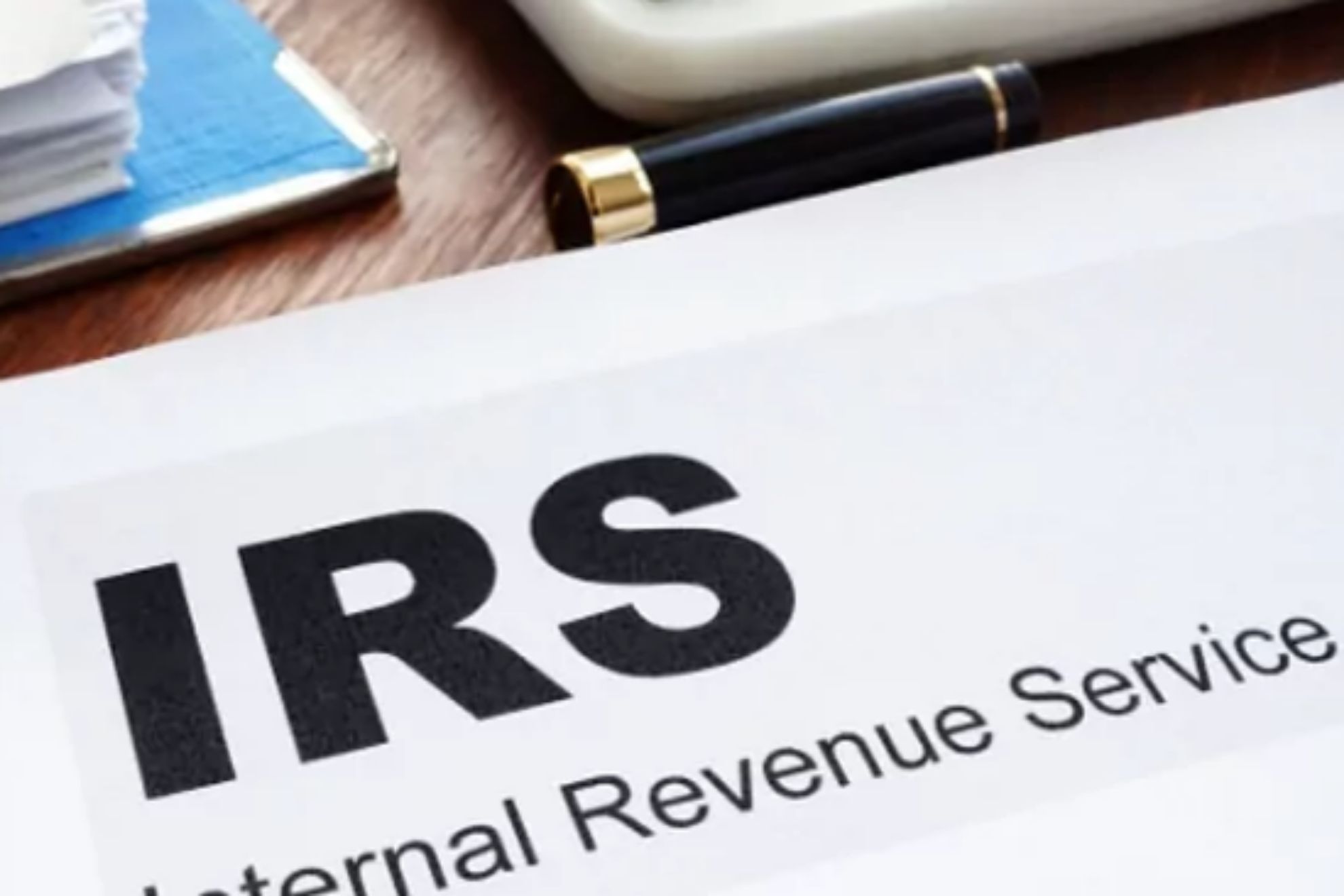Home>Finance>What Is The Difference Between A 401K And A 401A


Finance
What Is The Difference Between A 401K And A 401A
Published: October 18, 2023
Discover the key distinctions between a 401K and a 401A retirement plan and make informed financial decisions. Enhance your financial knowledge at [website name].
(Many of the links in this article redirect to a specific reviewed product. Your purchase of these products through affiliate links helps to generate commission for LiveWell, at no extra cost. Learn more)
Table of Contents
Introduction
When it comes to retirement planning, there are various types of retirement accounts available. Two popular options are the 401(k) and the 401(a). While they may sound similar, there are important differences between the two that individuals should understand and consider when choosing their retirement savings plan.
In this article, we will explore the differences between a 401(k) and a 401(a), highlighting their features, eligibility requirements, contribution limits, employer involvement, investment options, withdrawal rules, and portability. By the end, you will have a clear understanding of the unique characteristics of each retirement account and be better equipped to make informed decisions regarding your retirement savings strategy.
Before diving into the specifics, it’s essential to understand that both the 401(k) and the 401(a) are retirement savings plans established by employers to help employees save for their retirement. These plans come with potential tax advantages, making them an attractive option for many individuals.
Now, let’s delve into the intricacies of the 401(k) and the 401(a) to unravel their similarities and differences.
401(k) Explained
A 401(k) is a retirement savings plan that is offered by many employers as part of their benefit package. It is named after the relevant section of the Internal Revenue Code, which outlines the regulations for these types of plans.
With a 401(k) plan, eligible employees have the opportunity to save and invest a portion of their pre-tax income for retirement. The funds in a 401(k) account grow tax-deferred, meaning you won’t pay taxes on the earnings until you withdraw the money in retirement. This tax advantage allows your contributions to potentially grow faster over time.
One of the key advantages of a 401(k) is the ability to make contributions through automatic payroll deductions. This makes saving for retirement effortless, as the contributions are taken directly from your paycheck before you even get a chance to spend it.
Another notable feature of a 401(k) is the employer match. Many employers offer a matching contribution, where they match a percentage of the employee’s contributions up to a certain limit. This is essentially free money that can significantly boost your retirement savings. It’s important to note that the employer match is subject to vesting, which means you may have to stay with the company for a certain period of time before you fully own the matched funds.
With a 401(k), you have control over how your money is invested. Most plans offer a range of investment options, such as stocks, bonds, mutual funds, and more. You can choose a mix of investments based on your risk tolerance and financial goals. It’s important to regularly review and adjust your investment choices to ensure they align with your retirement objectives.
While a 401(k) provides many benefits, there are also some limitations to be aware of. There are annual contribution limits set by the IRS, which can change each year. As of 2021, the maximum employee contribution is $19,500, and individuals who are 50 years or older can make an additional $6,500 catch-up contribution. It’s important to contribute as much as possible to take full advantage of the tax benefits and employer match.
Additionally, withdrawals from a 401(k) before the age of 59 ½ are generally subject to a 10% early withdrawal penalty, along with income taxes. However, there are some exceptions to this rule, such as for qualified medical expenses or if you separate from your employer after the age of 55.
Now that we’ve looked at the basics of a 401(k), let’s move on to understanding the 401(a) retirement savings plan and how it differs from its counterpart.
401(a) Explained
A 401(a) is another type of retirement savings plan that is also provided by employers. While it shares some similarities with a 401(k), there are distinct differences that set it apart.
A 401(a) is typically offered to specific groups of employees, such as government employees, non-profit organization employees, and educational institutions. It is established and funded solely by the employer, and employees do not make contributions from their own salary.
Unlike a 401(k), which allows employees to contribute a portion of their pre-tax income, a 401(a) plan is funded by employer contributions. Employers have more flexibility in determining the contribution amounts and methods for a 401(a) plan. They can contribute a percentage of the employee’s salary, a fixed dollar amount, or use a formula to determine the contribution.
Similar to a 401(k), the funds in a 401(a) plan grow tax-deferred, meaning you won’t pay taxes on the earnings until you withdraw the money in retirement. This tax advantage can help your savings grow faster over time.
With a 401(a), employees have limited control over the investment options. The employer typically chooses the investment options for the plan. However, some employers may offer a variety of investment options to allow employees some level of customization.
It’s important to note that the 401(a) plan can have vesting requirements. This means that you may not fully own the employer-contributed funds until you meet certain conditions, such as a minimum number of years of service with the employer.
One advantage of a 401(a) plan is that it may provide a higher contribution limit compared to a 401(k). This can allow individuals to save more money for retirement, which can be especially beneficial for those with a higher income.
Withdrawals from a 401(a) plan are subject to the same rules and penalties as a 401(k). Early withdrawals before the age of 59 ½ are generally subject to a 10% penalty, along with income taxes. However, there may be exceptions or special rules depending on the specific plan and circumstances.
Now that we’ve explored the key features of both a 401(k) and a 401(a), let’s move on to a detailed comparison of the two to help you understand their differences and determine which one may be more suitable for your retirement savings needs.
Comparison of 401(k) and 401(a)
While both the 401(k) and the 401(a) are employer-sponsored retirement savings plans, they differ in several key aspects. Understanding these differences can help you make an informed decision about which plan may be better suited to your needs. Let’s compare the 401(k) and 401(a) in terms of eligibility, contribution limits, employer involvement, regulatory differences, investment options, withdrawal rules, and portability.
- Eligibility: The eligibility criteria for a 401(k) and a 401(a) may vary. A 401(k) is typically available to most employees, while a 401(a) is often offered to specific groups of employees, such as government or non-profit organization employees.
- Contribution Limits: The contribution limits for a 401(k) and a 401(a) can differ. In a 401(k), employees are allowed to contribute up to $19,500 (as of 2021) of their pre-tax income, with an additional catch-up contribution of $6,500 for individuals aged 50 and above. The contribution limits for a 401(a) are determined solely by the employer and may be higher than those of a 401(k).
- Employer Involvement: Both plans involve employer contributions, but the extent of employer involvement differs. In a 401(k), employers may offer a matching contribution up to a certain limit, while in a 401(a), the employer funds the plan without any employee contributions.
- Regulatory Differences: Although both plans fall under the same section of the Internal Revenue Code, there may be regulatory differences between a 401(k) and a 401(a) based on the specific employer and industry. These differences can include contribution methods, vesting requirements, and plan administration.
- Investment Options: A 401(k) typically offers a range of investment options, such as stocks, bonds, and mutual funds, allowing employees to customize their investment portfolio. In contrast, a 401(a) may have limited investment options chosen by the employer.
- Withdrawal Rules and Penalties: Both plans follow similar rules regarding withdrawals. Early withdrawals from a 401(k) or a 401(a) before the age of 59 ½ may be subject to a 10% penalty, along with income taxes. However, exceptions and special rules may apply in certain circumstances.
- Portability and Rollover Options: Both plans offer portability and rollover options. If you leave your job, you can roll over your 401(k) or 401(a) funds into another qualified retirement account, such as an individual retirement account (IRA) or a new employer’s retirement plan.
It’s important to evaluate your own retirement goals, consider the specific features of each plan, and consult with a financial advisor to determine which retirement savings plan aligns best with your financial needs and circumstances.
Now that we’ve compared the 401(k) and 401(a), let’s move on to explore other important aspects of these retirement plans.
Eligibility and Contribution Limits
Eligibility and contribution limits are important factors to consider when comparing retirement savings plans like the 401(k) and the 401(a). Understanding who is eligible to participate and the maximum amount you can contribute can help you make informed decisions about your retirement savings strategy.
Eligibility: Generally, the eligibility requirements for a 401(k) and a 401(a) can vary based on the specific employer and plan. In most cases, a 401(k) is available to most employees of private companies, while a 401(a) is often offered to specific groups of employees, such as government employees or workers in non-profit organizations. It’s important to check with your employer to determine if you are eligible to participate in either plan.
Contribution Limits: The contribution limits for a 401(k) and a 401(a) are determined by the Internal Revenue Service (IRS) and may change each year. As of 2021, the maximum employee contribution to a 401(k) is $19,500. Individuals who are 50 years of age or older can make an additional catch-up contribution of $6,500. These limits apply to pre-tax contributions made by employees.
On the other hand, the contribution limits for a 401(a) are typically set by the employer and can be more flexible compared to a 401(k). Employers may choose to contribute a fixed dollar amount, a percentage of the employee’s salary, or use a specific formula to determine the contribution. It’s important to note that the combined employee and employer contributions to a 401(a) cannot exceed the annual limit set by the IRS.
In some cases, employees may have access to both a 401(k) and a 401(a) plan. In such situations, the combined contributions made to both plans cannot exceed the annual limits set by the IRS.
It’s crucial to maximize your contributions to take full advantage of the tax benefits and employer matching, if available. Consider your financial situation, retirement goals, and contribution limits when deciding how much to contribute to your retirement savings plan.
Keep in mind that contribution limits can change over time, so it’s essential to stay updated with the latest IRS guidelines and consult with a financial advisor for personalized advice based on your specific circumstances.
Now that we’ve covered eligibility and contribution limits, let’s explore the role of the employer in both the 401(k) and 401(a) plans.
Employer Involvement
The level of employer involvement is an important aspect to consider when comparing the 401(k) and 401(a) retirement savings plans. While both plans involve employer contributions, the extent of employer involvement differs between the two.
401(k) Employer Involvement: In a 401(k) plan, employers have the option to offer a matching contribution. This means that the employer matches a certain percentage of the employee’s contributions up to a predetermined limit. For example, an employer may offer a match of 50% of the employee’s contributions up to 6% of their salary. This is essentially free money that can significantly boost your retirement savings.
Additionally, employers may choose to provide a non-elective contribution, where they contribute a certain percentage of the employee’s salary regardless of the employee’s contribution. This can further enhance the retirement savings potential for individuals participating in a 401(k) plan.
It’s important to note that employer contributions in a 401(k) plan may be subject to a vesting schedule. Vesting refers to how ownership of the employer-contributed funds is earned over time. Some plans have immediate vesting, meaning you fully own the employer contributions from day one. Others may have a graded vesting schedule, where you gradually earn ownership of the contributions over a specific period of time, typically a few years. Be sure to understand the vesting schedule of your plan as it can impact your retirement savings if you leave your job before reaching full vesting.
401(a) Employer Involvement: In a 401(a) plan, the employer is solely responsible for funding the plan. Employees do not make contributions from their own salary. Employers have more flexibility in determining the contribution amounts and methods for a 401(a) plan. They can contribute a fixed dollar amount, a percentage of the employee’s salary, or have a specific formula to calculate the contribution.
Unlike a 401(k), where employee contributions are voluntary, employees participating in a 401(a) plan do not have control over the contribution amount or the ability to make additional contributions from their own salary.
It’s important to understand the employer involvement in your retirement savings plan when considering your overall retirement strategy. The employer’s contributions can significantly impact your retirement savings growth and accelerate your progress towards your financial goals.
Now that we’ve explored the role of the employer in both the 401(k) and 401(a) plans, let’s move on to discuss the regulatory differences between these two retirement savings options.
Regulatory Differences
While the 401(k) and 401(a) retirement savings plans share similarities, there are regulatory differences that individuals should be aware of. These differences can vary based on the specific employer and industry. Let’s examine some of the regulatory variances between the two plans:
Contribution Methods: The IRS allows employers flexibility in determining the contribution methods for both 401(k) and 401(a) plans. However, employers may choose different contribution methods for each plan. For example, an employer may contribute a fixed percentage of an employee’s salary to a 401(a) plan while providing a matching contribution based on the employee’s voluntary contributions to a 401(k) plan.
Vesting Requirements: Vesting refers to the ownership of employer-contributed funds. While vesting schedules can exist in both 401(k) and 401(a) plans, the specific requirements may differ. Some employers offer immediate vesting, meaning employees have full ownership of the employer contributions as soon as they are made. Others may have a graded vesting schedule, where the employee earns a percentage of ownership over a specified period. It’s crucial to understand the vesting schedule of each plan to fully grasp the impact on your retirement savings if you leave your job before achieving full vesting.
Plan Administration: The administration of 401(k) and 401(a) plans can also differ. Certain administrative tasks, such as plan design, record-keeping, and compliance reporting, may be unique to each plan based on the specific requirements of the Internal Revenue Code. Employers may choose to outsource plan administration to third-party providers or have an in-house team to handle these responsibilities.
Employer Type: The regulatory differences between the 401(k) and 401(a) plans can also be influenced by the type of employer. 401(k) plans are common in the private sector, while 401(a) plans are often offered to specific groups of employees such as government workers or non-profit organizations. Government-sponsored retirement plans may have additional regulations and requirements specific to their industry and jurisdiction.
It’s essential to recognize that these regulatory differences may have varying impacts on an individual’s retirement savings. It is advisable to consult with a qualified financial advisor or review the plan documents provided by your employer to understand the specific regulations governing your 401(k) or 401(a) plan.
Next, let’s explore the investment options available within the 401(k) and 401(a) plans.
Investment Options
Investment options play a crucial role in determining the growth potential of your retirement savings. Both the 401(k) and 401(a) plans offer investment options, although there may be differences in the level of control and variety of choices available. Let’s explore the investment options within these retirement plans:
401(k) Investment Options: A 401(k) plan typically provides a broad range of investment options to choose from. These options can include stocks, bonds, mutual funds, index funds, target-date funds, and more. This variety allows employees to tailor their investment strategy based on their risk tolerance, time horizon, and financial goals. Some 401(k) plans may also offer a self-directed brokerage option, providing even more flexibility for individuals who want to invest in specific stocks or other assets.
It’s important to note that the investment options may be limited to those selected by the employer or plan administrator. Employers often seek professional advice from financial institutions to curate a diverse lineup of investment choices. It’s advisable to review the available options, their associated fees, historical performance, and risk factors before making investment decisions.
401(a) Investment Options: In a 401(a) plan, the employer typically has more control over the investment options. The employer selects the investment funds or options available to plan participants. While employees may have limited control or customization of their investments, some employers offer a variety of funds encompassing different asset classes and risk profiles.
It’s important to review the investment options within a 401(a) plan to ensure they align with your long-term financial goals and risk tolerance. If the investment options provided do not meet your needs, you may also consider diversifying your retirement savings by opening an individual retirement account (IRA) in addition to your 401(a) plan.
Regardless of the retirement plan you choose, it’s crucial to periodically review your investment portfolio to ensure it remains aligned with your goals and risk tolerance. As your circumstances change, you may need to adjust your investment allocations to maximize growth potential and mitigate risk.
Now that we’ve explored the investment options, let’s move on to understanding the withdrawal rules and penalties associated with both the 401(k) and 401(a) plans.
Withdrawal Rules and Penalties
Understanding the withdrawal rules and penalties is crucial when it comes to managing your 401(k) or 401(a) retirement savings plan. While both plans are designed to help individuals save for retirement, there are certain regulations in place to ensure that the funds are used for their intended purpose. Let’s explore the withdrawal rules and penalties associated with both plans:
401(k) Withdrawal Rules and Penalties: In general, withdrawals from a 401(k) plan are subject to specific rules and penalties. If you withdraw funds from your 401(k) before the age of 59 ½, you may be subject to a 10% early withdrawal penalty on top of the regular income taxes due on the distributed amount. This penalty is designed to discourage early withdrawals and help individuals preserve their retirement savings for the future.
There are certain exceptions to the early withdrawal penalty, such as for individuals who retire or separate from service with their employer at age 55 or older. Additionally, you may avoid the penalty if you qualify for a hardship withdrawal due to specific financial needs, such as medical expenses or preventing foreclosure on your home. However, even if you qualify for an exception, the withdrawn amount will still be subject to income taxes.
It’s important to note that once you reach the age of 72 (or 70 ½ if you turned 70 ½ before January 1, 2020), you must start taking required minimum distributions (RMDs) from your 401(k) plan. These distributions are mandatory and subject to income taxes, but you can avoid the early withdrawal penalty since you are of the required age.
401(a) Withdrawal Rules and Penalties: Similar to a 401(k), withdrawals from a 401(a) plan before the age of 59 ½ may be subject to a 10% early withdrawal penalty, in addition to income taxes. The specific rules and exceptions depend on the provisions of the plan established by the employer. It’s crucial to review your plan documents to understand the withdrawal rules and any available exceptions.
It’s important to carefully consider your financial situation and retirement goals before making premature withdrawals from either a 401(k) or 401(a) plan. Early withdrawals can significantly impact the growth potential of your retirement savings and result in penalties and additional taxes.
Now that we’ve covered the withdrawal rules and penalties, let’s move on to exploring the portability and rollover options for both plans.
Portability and Rollover Options
Portability and rollover options are essential considerations when it comes to managing your retirement savings. Both the 401(k) and 401(a) plans offer flexibility in moving your funds to different accounts or plans. Let’s explore the portability and rollover options available for both plans:
Portability: Portability refers to the ability to transfer your retirement funds between different retirement accounts or plans. Both 401(k) and 401(a) plans offer portability options, allowing you to take your accumulated savings with you if you change jobs or when you retire.
With a 401(k) plan, if you leave your job, you typically have the option to roll over your funds into an individual retirement account (IRA), which offers a wider range of investment options and greater control over your investments. Another option is to roll over your 401(k) balance into your new employer’s retirement plan, provided they accept rollovers.
In a 401(a) plan, you may also have portability options. If you are no longer employed with the plan sponsor, you may have the choice to roll over your 401(a) funds into an IRA or another employer-sponsored retirement plan, depending on the plan’s rules and provisions.
Rollover Options: Both the 401(k) and 401(a) plans provide rollover options, allowing you to move your retirement savings while maintaining tax-deferred status. A rollover involves transferring your funds directly from one account to another, without triggering any tax consequences.
Whether it’s a 401(k) or 401(a) plan, it’s crucial to follow the specific rollover procedures and guidelines outlined by the plan provider. Direct rollovers, where the funds are directly transferred from one account to another, are often recommended to avoid potential tax withholding and penalties.
Consulting with a financial advisor or tax professional can help you navigate the rollover process and make informed decisions based on your individual circumstances and retirement goals.
It’s important to note that rollovers must be completed within a specific timeframe to maintain the tax-advantaged status of your retirement funds. Failure to complete the rollover within the designated period may result in taxes and penalties.
Now that we’ve explored the portability and rollover options for both the 401(k) and 401(a) plans, let’s summarize the key points and conclude our discussion.
Conclusion
The 401(k) and 401(a) retirement savings plans are popular options for individuals looking to save for their future. While they share similarities, it’s important to understand the key differences between these plans to make informed decisions that align with your financial goals and circumstances.
The 401(k) plan allows employees to contribute a portion of their pre-tax income, with potential for employer matching. It offers a wide range of investment options and provides flexibility in managing retirement savings. However, there are contribution limits, early withdrawal penalties, and vesting schedules to consider.
On the other hand, the 401(a) plan is funded solely by the employer, with limited control over investment options for employees. It may have higher contribution limits, but the employer determines the contribution method and the extent of employee involvement.
Eligibility, contribution limits, employer involvement, regulatory differences, investment options, withdrawal rules, and portability are important factors to consider when comparing these plans.
To make the most of your retirement savings, it’s crucial to contribute consistently, take full advantage of employer matching contributions, and carefully manage your investments to align with your risk tolerance and retirement goals. Regularly review and update your retirement savings strategy to ensure it remains aligned with your changing circumstances.
Consulting with a financial advisor or retirement planning professional can provide valuable guidance in choosing the right plan, maximizing contributions, and optimizing investment strategies.
Remember, everyone’s financial situation is unique, so it’s important to thoroughly analyze your options and consider your long-term goals when selecting between a 401(k) and a 401(a) plan.
By understanding the features, limitations, and regulations associated with each plan, you can make informed decisions that set you on the path to a secure and prosperous retirement.














